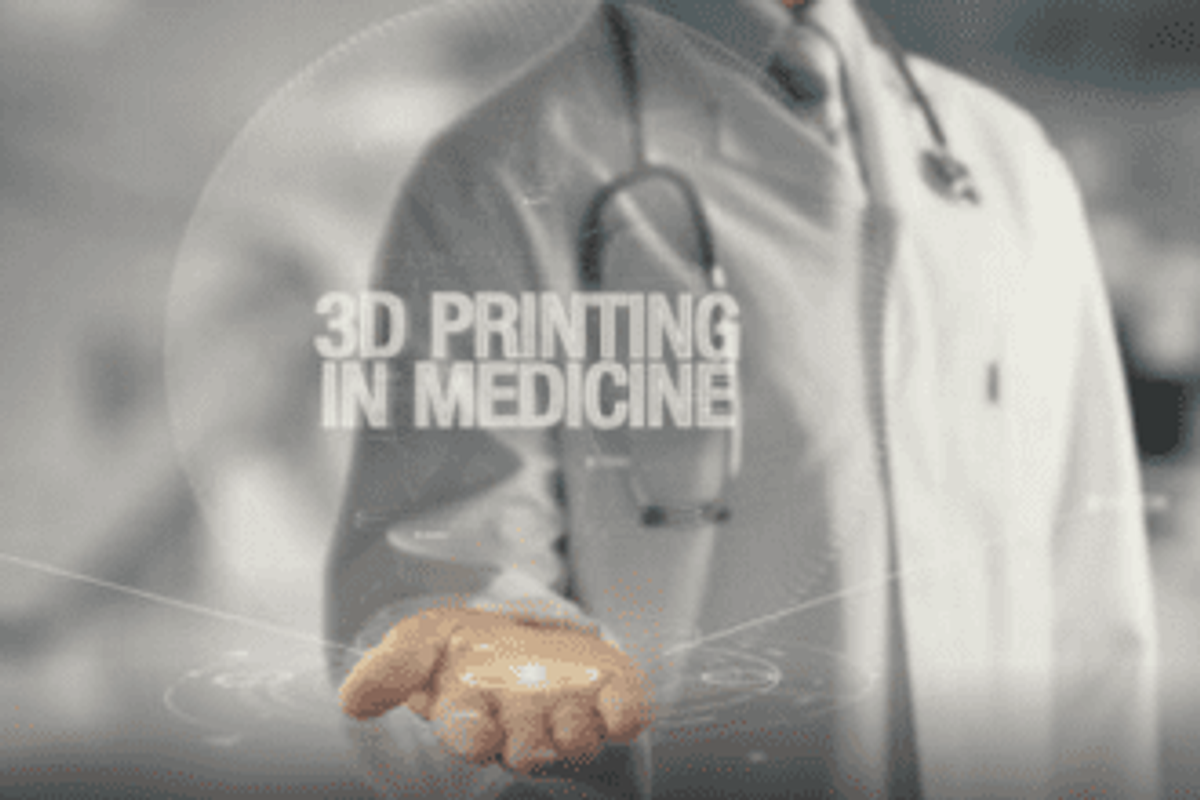Medical Field Bolstered by 3D Printing Industry Leaders

3D printing technologies are already making advancements in the medical field. That trend is going to continue growing as two industry leaders recently announced ways they’re implementing 3D printing technology in the medical industry.
While 3D printing is already making strides in the medical field, two of the industry’s giants are ensuring that 3D printing technologies will continue becoming a force to be reckoned with in the overall sector.
On Monday (November 27), 3D printing mammoths Stratasys (NASDAQ:SSYS) and Materialise (NASDAQ:MTLS) separately announced ways they’re advancing 3D printing technologies in the medical industry.
Although the companies are bringing two completely different applications to the table, it only goes to show how imperative 3D printing is becoming in the health care sector.
Case in point, Stratasys kicked the week off with the unveiling of BioMimics, a “highly realistic” and advanced capability to 3D print medical models of the human anatomy for physician and medical device testing, as well as educational purposes.
“Eliminating restrictions associated with training, research and testing on animal, mannequin or cadaver models, BioMimics effectively mirrors the intricacies of both soft issue and hard bones via multi-material 3D printing,” the release states.
The release continued, highlighting that with Stratasys’ existing PolyJet 3D printing technology, healthcare organizations will be able to create 3D printed models that match situations they encounter during live medical scenarios.
“BioMimics is a revolution in medical modeling, capitalizing on advanced 3D printing techniques for clinically accurate representations of complex human anatomies – from microscopic patterns of tissue to replicating soft to hard texture of body structures,” said Scott Rader, GM of healthcare solutions at Stratasys.
Available in North America, BioMimics will initially target fully-functional bone and heart models, and will look to target vascular structures early next year.
Following Monday’s announcement, shares of Stratasys responded mildly positive, increasing 0.95 percent to reach $22.36 at market close.
Over to Materialise, the Belgium-based company announced that it and Siemens Healthineers are teaming up to bring Materialise Mimics inPrint software to hospitals on a global scale.
According to the release, the partnership was announced at the 2017 Radiological Society of North America (RSNA) Annual Meeting, and will make Materialise’s software available to radiologists via the Siemens Healthineers syngo.via open app platform.
“We believe 3D printing is going to revolutionize the medical industry and we are always looking for ways to improve accessibility of our 3D printing software to more patients and hospitals,” Brigitte de Vet, Vice President of Medical at Materialise said in the release.
Other benefits of the software integration includes quickly facilitating 3D printing in clinical environments and contributing to efficient care for both patients and hospitals.
At market close on Monday, shares of Materialise had increased slightly by 2.48 percent to $14.85–a possible indication that its shareholders approved the partnership with Siemens.
Looking ahead to the future, a Research and Markets report from July 2017 indicates that the 3D printing industry–in combination with medical devices –is poised to reach $3.19 billion by 2022, growing at a compound annual growth rate of 22.6 percent. Contributing to that growth will be a “booming market” for organ transplantation, which the report states increases the acceptance of 3D printed implants and organs. That said, medical device regulations seeking approval and high costs of 3D printed organs may “hinder” the market.
Don’t forget to follow us @INN_Technology for real-time news updates!
Securities Disclosure: I, Jocelyn Aspa, hold no direct investment interest in any company mentioned in this article.